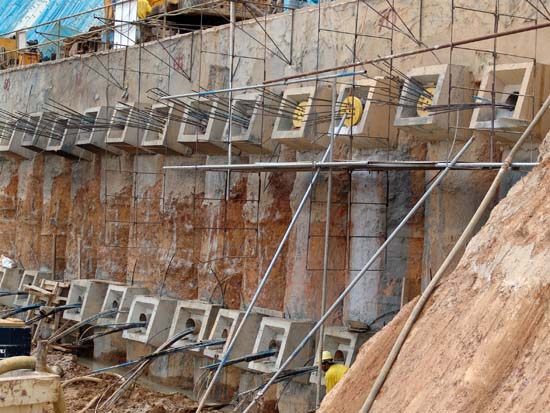In addition to supporting gravity loads floor and roof systems in typical reinforced concrete buildings act as diaphragms which transfer the lateral forces to shear walls frames or other elements that make up the lateral force resisting system lfrs.
Reinforced concrete diaphragm wall.
Typical sequence of work includes.
As shown in figure.
Design of reinforced concrete masonry diaphragm walls introduction.
Guide wall installation for diaphragm walls guide walls are constructed in situ typically as lighly reinforced concrete elements.
A diaphragm wall d wall is a reinforced concrete structure constructed in situ panel by panel.
Construct the guide wall.
Design of reinforced concrete diaphragms for wind.
Diaphragm walls are composed of two wythes of masonry with a large cavity or void.
Guide walls maintain the horizontal allignment and wall continuity of a diaphragm wall while the provide support for the upper soils depth during panel excavation.
Construction of reinforced concrete masonry diaphragm walls introduction.
In the basement market d walls are often used on congested sites close to existing structures where the excavation depth and ground conditions would prove problematic for piled walls.
Diaphragm wall is a reinforced concrete structure constructed in situ panel by panel.
Excavation to form the diaphragm wall trench.
Diaphragm walls are concrete or reinforced concrete walls constructed in slurry supported open trenches below existing ground.
The wall is usually designed to reach very great depth sometimes up to 50m mechanical excavating method is thus employed.
The available variety of materials shapes and.
Reinforced diaphragm walls present several construction benefits.
The wythes are bonded.
Stop end pipes in this method two steel pipes are inserted into the trench before concreting so that after.





























